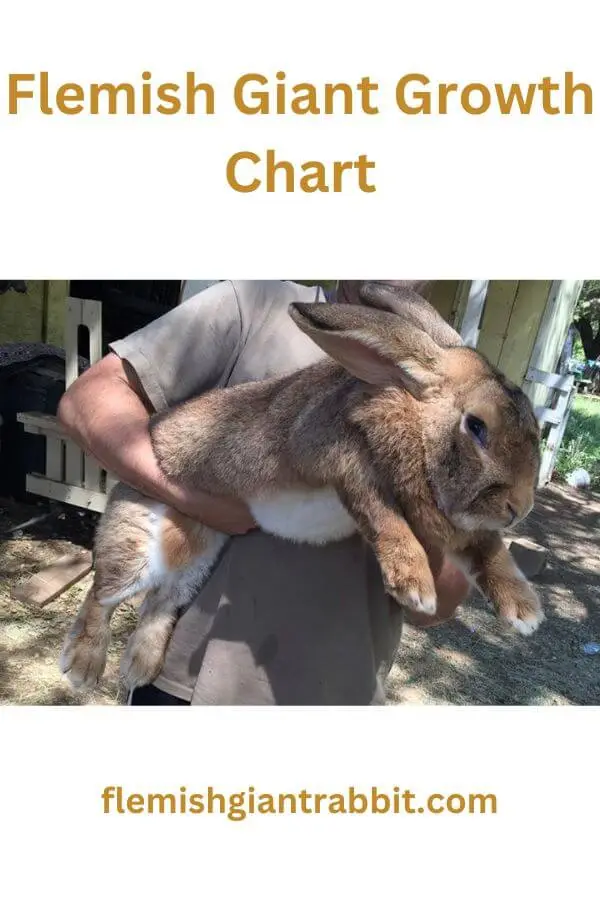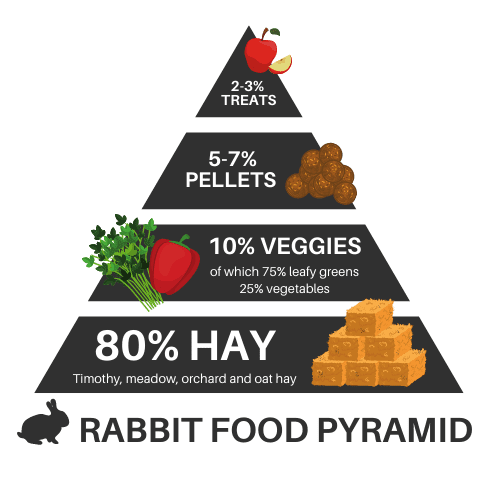
One of my favorite memories from my 25 years as a veterinarian is my encounter with a young Flemish giant named Max. Max’s owners booked him for a check-up a few months ago. When I met Max, I knew something was wrong. While I interrogated his owners to know what the problem was, I realized where the problem began.
Max’s stunted growth and pale appearance were the result of inadequate nutrition.”If only his owners had a growth chart to track his growth, he’d be healthier,” I thought. After getting similar cases, I developed a growth chart for Flemish Giant rabbits which aims to assist their owners in providing the best care possible while also tracking their growth.
This article will teach you how to create a Flemish Giant growth chart and what to look for as they develop. Whether you’re a new or experienced owner of a Flemish Giant, this information will help you give your pet the best possible care, as Max received.
What You Need to Know About Flemish Giant Growth
To create a growth chart for your Flemish giants, you first need to understand how they grow. The Flemish giant rabbits are a large breed of rabbits. The males weigh an average of 13 pounds, and the females weigh an average of 12–14 pounds. Yet, some of them can weigh up to 20 pounds. Their diet, environment, and genetics all play important roles in their development.
Diet is important to the growth of the Flemish giants. They need diets that are high in fiber, like hay, fruits, vegetables, and some grains. However, if they are overfed, they are likely to get obese and develop musculoskeletal issues.
The environment is another vital factor in their growth. Flemish giants need a spacious place to live. This will enable them to exercise often and build stronger bones. Also, they are sensitive to heat or cold; hence, they need proper temperature control.
Also, their genetics are an important part of their growth. To achieve those desirable traits such as size, color, and body shape, you need to select breeding pairs with a history of healthy growth. This is critical in ensuring that their offspring develop properly.
Creating a Flemish Giant Growth Chart
When you have a Flemish Giant rabbit, it’s important to keep track of its growth so that you can make sure it’s healthy and getting all the nutrients it needs. This is where a Flemish Giant Growth Chart comes in handy!
To create a Flemish Giant Growth Chart, you’ll need to record data about your rabbit’s growth. This includes things like its weight, length, and other measurements. By keeping track of this information, you can see how your rabbit is growing and make sure it’s on track for a healthy and happy life.
To take these measurements, you will be needing a few tools. A scale will help you weigh your rabbit so you can track its weight gain. You can also use a ruler to measure its length and other body parts. By taking these measurements regularly, you can see how your rabbit is growing and make adjustments to its diet or living conditions as needed.
Creating a Flemish Giant Growth Chart is an easy way to ensure your rabbit is healthy and happy. Just remember to record your measurements regularly and use the right tools to take accurate measurements. With a little bit of effort, you’ll have a healthy and happy Flemish Giant rabbit in no time!
Flemish Giant Growth Chart
The Flemish Giant Growth Chart is a tool that rabbit breeders and owners use to track the growth and development of Flemish Giant rabbits. Flemish Giants are one of the largest breeds of domestic rabbits and can weigh up to 22 pounds when fully grown. The growth chart tracks the rabbit’s development and ensures it is growing at a healthy rate. It comprises metrics like weight, length, and height.
When you can track their growth patterns, it becomes easier to identify health issues on time.
| Age (weeks) | Average Weight (pounds) | Characteristics |
| 8 | 3-4 | Weaned and eating solid food, exploring environment, starting to exhibit personality traits |
| 12 | 6-7 | The rapid growth phase, becoming more active and playful, developing adult coat and coloring |
| 16 | 8-9 | Growth slows down slightly and may start to exhibit breeding behavior and aggression toward same-sex rabbits |
| 20 | 10-11 | Approaching adult size and weight and may exhibit territorial behavior and dominant displays |
| 6 months | 11-13 | Fully grown in terms of size and weight, may still be developing mentally and socially |
| 9 months | 12-14 | Mature adults, exhibiting a full range of personality traits and behaviors, may be ready for breeding or showing |
Flemish Giant Rabbit Age And Potential Health Issues
The average lifespan of a Flemish Giant rabbit is 5 to 7 years, though some live longer as a result of adequate care. Like all rabbits, Flemish Giants can be prone to certain health issues.
According to fetch by WebMd:
These include dental problems such as overgrown teeth. This can cause difficulty eating and even lead to digestive issues.
To prevent dental problems, feed them a balanced diet with plenty of hay and some pellets.
Flemish giants are also at risk for gastrointestinal stasis, where the digestive system slows down or stops moving altogether. A bad diet, insufficient exercise, stress, and several other factors may contribute to this.
Another common health issue for Flemish giants is obesity. These rabbits are large and will gain more weight if they are not given enough exercise and fed a balanced diet.
The health problems they may face include diabetes, heart disease, and joint pain.
Flemish giants are prone to ear infections because of the buildup of wax or germs in the ear canal. Signs of an ear infection include head shaking, scratching at the ears, and a foul odor coming from the ears.
Flemish Giant Rabbit Care
Flemish giant rabbits are known for their large size and gentle nature, making them great family pets. Yet they do need proper care and attention to thrive. Here are some tips that will assist you in caring for a Flemish Giant rabbit:
- Housing: Flemish giant rabbits need a lot of space to move about. A hutch or cage at least 4 feet by 2 feet by 2 feet is suitable for one Flemish Giant rabbit. They also need a solid floor, as wire floors can cause injuries.
- Bedding: Provide your Flemish Giant with soft bedding like hay or wood shavings. Use cedar and pine shavings sparingly because they can hurt rabbits.
- Feeding: Fiber-rich diets like hay, leafy greens, and fresh fruits are essential for rabbits.

You can also offer a small number of pellets, but these should not be the main component of their diet.
- Grooming: They have dense fur that requires regular grooming to prevent matting. Brush your rabbit’s teeth at least once a week and check their nails.
- Exercise: Rabbits need exercise to stay healthy and prevent obesity. Provide your rabbit with a large, safe space to play and explore. You can make room for supervised playtime.
- Health care: Flemish giants are prone to certain health issues, such as obesity and dental problems. Ensure to take your rabbit for regular check-ups with a veterinarian who has experience in treating rabbits.
Frequently Asked Questions Related To Flemish Giant Growth Chart
When Do Flemish Giant Rabbits Stop Growing?
It may take a Flemish Giant rabbit up to a year or longer to achieve its full adult size, and some grow even after reaching the age of two. Generally, males grow more slowly than females and are often larger.
How Fast Do Flemish Giant Rabbits Grow?
The growth rate of Flemish Giant rabbits is slower than that of other rabbit breeds. Babies gain 1-2 pounds every month in the months right after birth, but as they age, their growth rate will reduce.
How Much Should a Growing Flemish Giant Rabbit Weigh?
The weight of a growing Flemish giant rabbit can vary depending on age, gender, and genetics. However, a healthy Flemish giant rabbit should weigh between 10 and 14 pounds at six months of age.
How Much Space Does a Growing Flemish Giant Rabbit Need?
Growing Flemish Giant rabbits require plenty of room to move and exercise. A minimum of 8 square feet of living space is recommended for one rabbit, with more space needed for each additional rabbit.
Flemish Giant Growth Chart – Conclusion
If you are a rabbit owner, a Flemish Giant growth chart is a helpful resource to track the growth and development of your pet.
By keeping tabs on your rabbit’s growth over time, you can ensure that they grow healthy and catch any potential health problems early.
Also, observe your rabbit’s behavior and seek veterinary advice if you have any concerns. A growth chart will surely aid you in providing the best care possible for your furry friend.